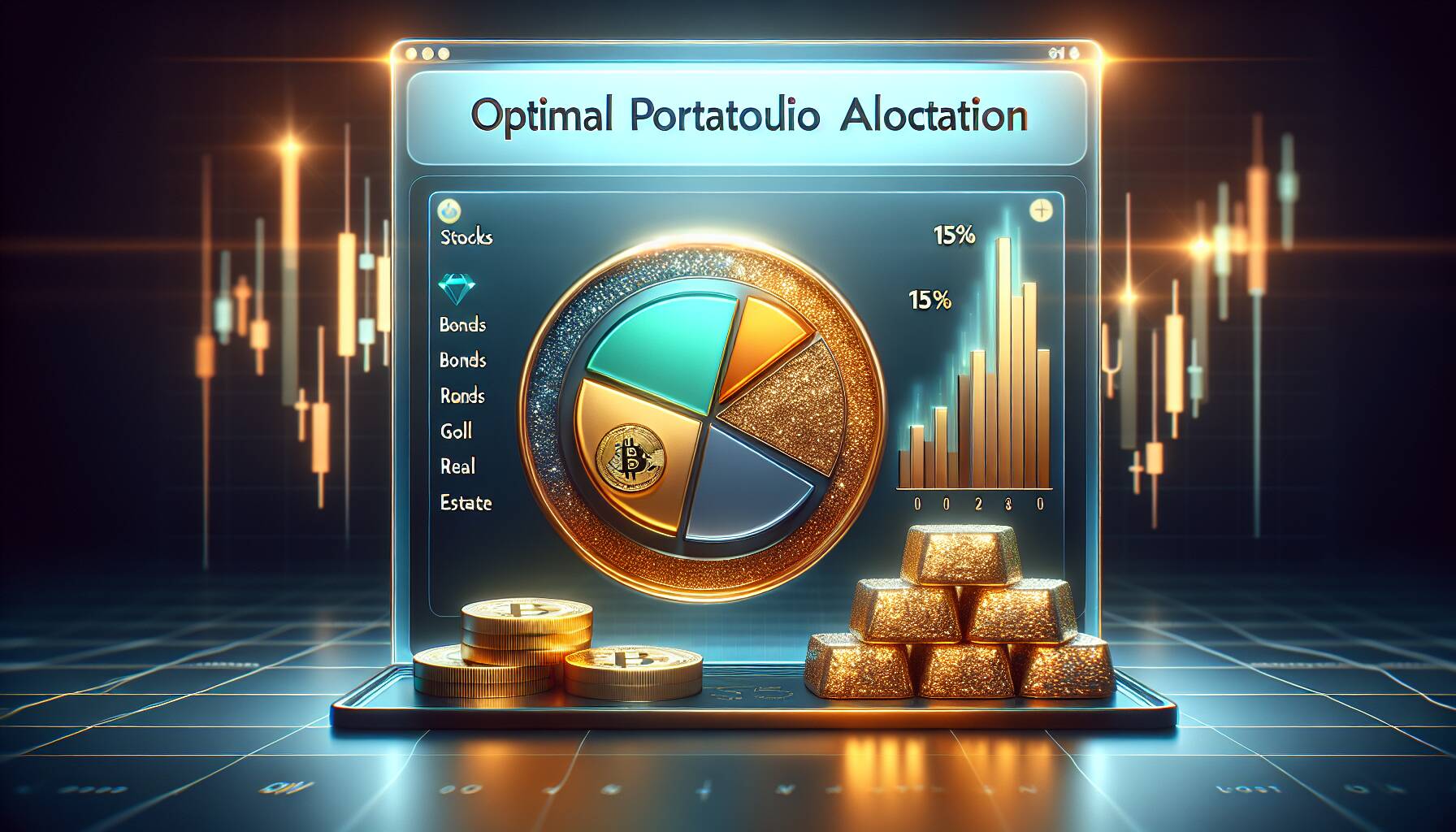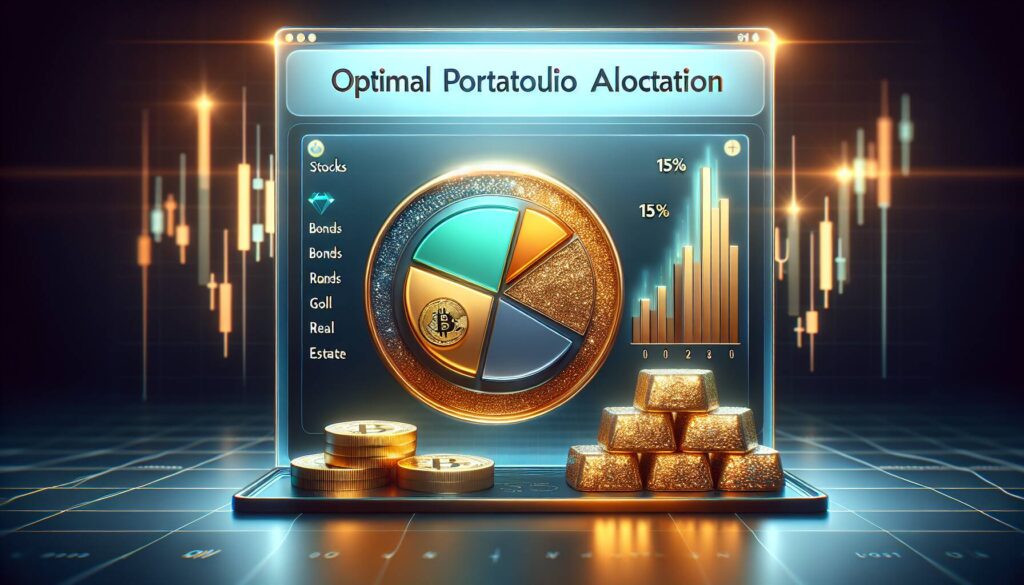In a significant shift from his previous stance, Ray Dalio, the founder of Bridgewater Associates, is urging investors to consider allocating 15% of their portfolios to Bitcoin (BTC) or gold. This recommendation comes amid rising concerns about the United States’ escalating debt burden and potential long-term currency devaluation. Speaking on the Master Investor podcast, Dalio emphasized that optimal portfolio management for minimizing risk while maximizing returns would include a substantial stake in these assets, a considerable increase from his earlier suggestion of just 1-2% in BTC last year.
Dalio’s remarks are underpinned by alarming projections about the U.S. economy, which will see an estimated $12 trillion in new Treasury issuance in the coming year to manage its staggering $36.7 trillion national debt. The latest treasury report only confirms these concerns, revealing that the government plans to borrow an additional $1 trillion in the third quarter, exceeding prior forecasts. With borrowing expected to continue, Dalio warns of a “debt doom loop,” suggesting a scenario where traditional fiat currency might lose its appeal in favor of more stable, hard assets like gold and Bitcoin.
Despite advocating for Bitcoin as a part of a diversified investment strategy, Dalio’s skepticism regarding its utility as a reserve currency remains. He expressed concerns about the transparency of blockchain technology, which allows governments the ability to track transactions, alongside potential vulnerabilities that could compromise Bitcoin’s reliability as an alternative medium of exchange. “Governments can see who is doing what transactions on it,” he noted, illustrating a significant drawback in the context of financial privacy.
“If you were optimizing your portfolio for the best return-to-risk ratio, you would have about 15% of your money in gold or Bitcoin,” Dalio stated.
For now, as Bitcoin trades above $118,000 in Asian markets, Dalio’s flexible recommendation allows investors to determine their preferred balance between BTC and gold based on individual risk tolerance and investment goals.

Investment Strategy Amid Economic Concerns
Ray Dalio’s insights regarding portfolio allocation emphasize the importance of diversification in uncertain economic times.
- 15% Portfolio Allocation: Dalio suggests investors allocate 15% of their portfolios to bitcoin or gold, up from his previous recommendation of 1–2% in BTC.
- Debt Doom Loop: Concerns over the U.S. national debt, projected to reach $36.7 trillion, create urgency for investors to rethink asset allocation.
- Increased Treasury Issuance: Anticipated $12 trillion in new Treasury issuance over the next year signals a potential devaluation of fiat currency.
- Effects of Currency Devaluation: Diversifying with bitcoin and gold could mitigate risks associated with the loss of value in fiat currencies.
- Preference for Gold: Dalio maintains that while he acknowledges bitcoin, he still favors gold as a safer investment.
- Surveillance Concerns: Dalio raises questions about bitcoin’s potential as a reserve currency due to transparency issues and possible vulnerabilities.
- Personal Investment: Despite skepticism, Dalio admits to owning “some Bitcoin”, showing a balanced view towards the asset.
“If you were optimizing your portfolio for the best return-to-risk ratio, you would have about 15% of your money in gold or Bitcoin.” – Ray Dalio
Ray Dalio’s Bold Bitcoin and Gold Recommendation: A Game Changer for Investors?
In a striking pivot from his previous stance, Ray Dalio, the founder of Bridgewater Associates, now advocates for allocating a substantial 15% of investment portfolios to either Bitcoin or gold. This recommendation stems from urgent concerns regarding the U.S.’s escalating debt situation and the potential devaluation of the dollar. Dalio’s earlier suggestion of a mere 1-2% investment in Bitcoin seems almost outdated in light of recent economic forecasts, including a staggering $12 trillion in new Treasury issuance anticipated in the upcoming year.
The competitive advantages of Dalio’s proposal include its potential to serve as a buffer against inflation and currency devaluation risks. As investors increasingly seek refuge from a volatile financial landscape, incorporating alternative assets like Bitcoin and gold could enhance portfolio resilience. Notably, Dalio emphasizes that both assets act as effective diversifiers, allowing investors to potentially mitigate losses during economic downturns.
On the flip side, the disadvantages may arise from Dalio’s personal skepticism towards Bitcoin’s viability as a reserve currency. His concerns over transaction transparency and blockchain vulnerabilities could deter risk-averse investors from fully embracing crypto assets. The complex regulatory environment surrounding cryptocurrencies may further complicate adoption, making potential investors wary.
Dalio’s insights could particularly benefit younger, tech-savvy investors who are more open to integrating cryptocurrencies into their portfolios. Conversely, traditional investors accustomed to more conventional assets may find themselves at a crossroads, struggling to reconcile Dalio’s recommendations with their long-held beliefs about risk and security in investment strategies. This divide could potentially create challenges for financial advisors and institutions striving to balance between innovative assets and established practices.

















